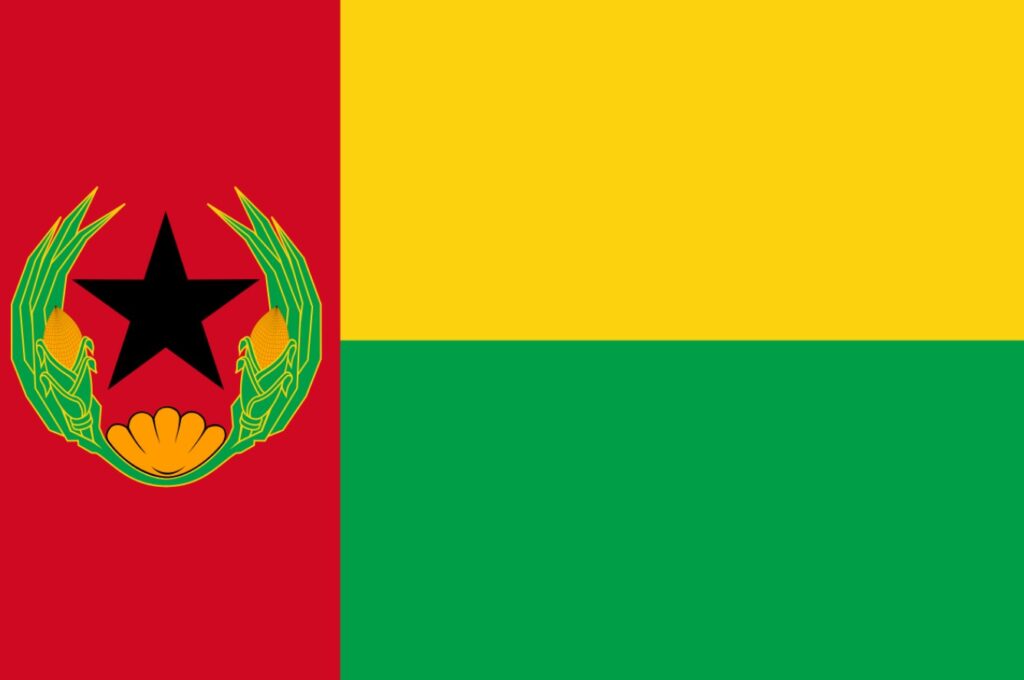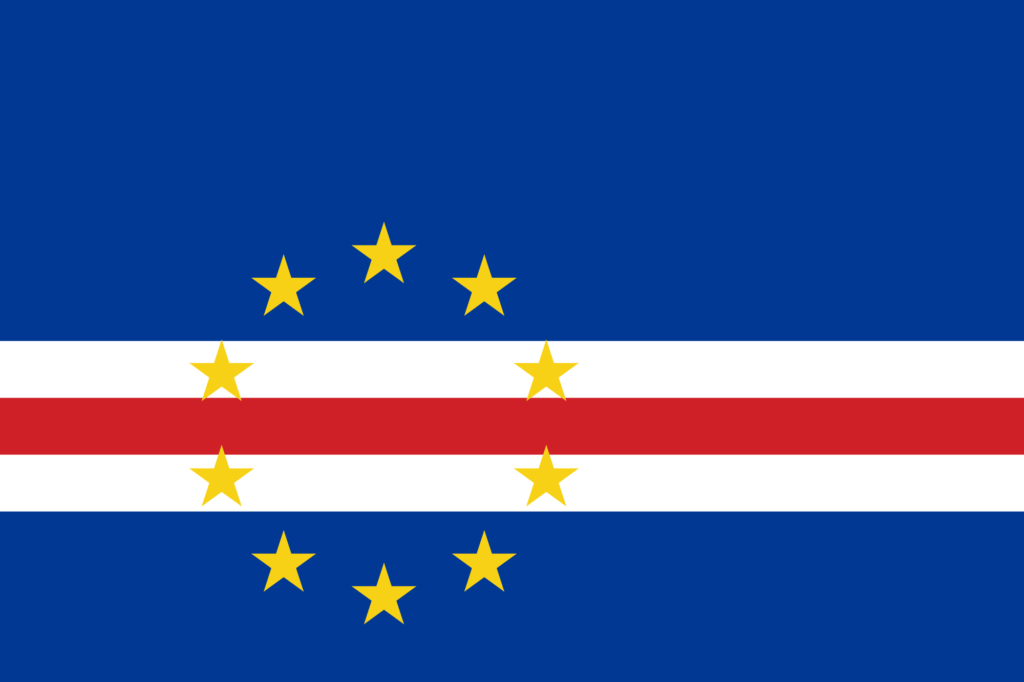The National Flag is made up of five rectangles arranged lengthwise and overlapping. The upper and lower rectangles are blue, the upper one occupying a surface equal to half the flag and the lower one a quarter. Separating the two blue rectangles, there are three bands, each with a surface area equal to one-twelfth the area of the Flag. The bands adjacent to the blue rectangles are white, and the one between them is red. Over the five rectangles, ten five-pointed yellow stars, with the upper vertex at ninety degrees, define a circle whose center is located at the intersection of the median of the second vertical quarter, counting from the left, with the median of the second horizontal quarter, counting off the lower edge. The closest star to this edge is inscribed in an invisible circle whose center is on the median of the lower blue band.
The predominant blue of the flag symbolizes the sky and the sea. The ten islands of the archipelago are represented by stars, arranged in a circle, a sign of union. The bands refer to the construction of the country, white being the peace that the people want and red being the effort of the people.
Cape Verde’s former flag was adopted by the PAIGC during the independence struggle. After that, it became the official flag of Cape Verde. However, when in 1991 there was a constitutional reform to establish multi-partyism, new national symbols were created, with the argument that the old ones identified too much with the PAIGC/PAICV, which had been in power until that time in a single-party regime, in order to the better to portray the nature of the reformation.
At the time of the change of the flag and other national symbols, many argued that the change was purely a way of affirming the party that had won the first multi-party elections, the MpD. Other arguments related to the fact that the flag denoted a certain anti-Africanism by removing the protagonism of the typical colors of African flags (red, green and yellow) and assuming a look quite similar to the flag of the European Union.
One factor to consider is that Cape Verdeans quickly attached themselves to the symbols that signified their independence, so the exchange had a considerable impact on those who lived through the era of colonial liberation.



